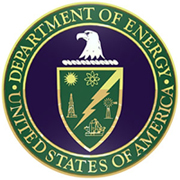
Awmna Rana (Chemistry)
Ms. Awmna Kalsoom Rana is currently pursuing dual Bachelor of Science degrees in chemistry and biological science at Florida International University (FIU). Her expected graduation date is May 2018. She joined the Department of Energy’s Science and Technology Workforce Development Program at FIU in August of 2015. Prior to becoming a DOE Fellow, Awmna developed an interest in geographic information systems (GIS) and completed a GIS certification course at Florida Atlantic University (FAU). She used this experience when she worked with a private company as a GIS analyst. Her professional interests include green chemistry implementation of cleaner production practices, electronic waste management in developing countries and researching methods for reducing hazardous substances in electronic waste (e-waste). After graduation, Awmna plans on furthering her education in the field of chemistry by pursuing a master’s degree in green chemistry and eventually a Ph.D. with research on sustaining electronic hazardous waste. Recently, Awmna participated in the McNair’s Scholars Conference in 2015, where she presented her preliminary research for a DOE project being conducted at the Savannah River Site. She is an active member of the Chemistry Club and the Chess Club at FIU.
DOE Fellow Related Research
As a DOE Fellow, Awmna is working under the guidance of Ms. Angelique Lawrence, a Research Specialist and professionally certified GIS analyst. Her current research supports the Savannah River Site and involves the application of geospatial technologies for the development of hydrological models that simulate the flow and transport of contaminants in the Tims Branch watershed. Her role is to assist in the pre- and post-processing of model-specific data using ArcGIS and other geoprocessing tools; to create maps and graphs for visualization of model results; and to conduct geospatial analyses of timeseries data to observe changes in land use, vegetation and other relevant data parameters and evaluate whether they may have an impact on the hydrology of the Tims Branch watershed.
